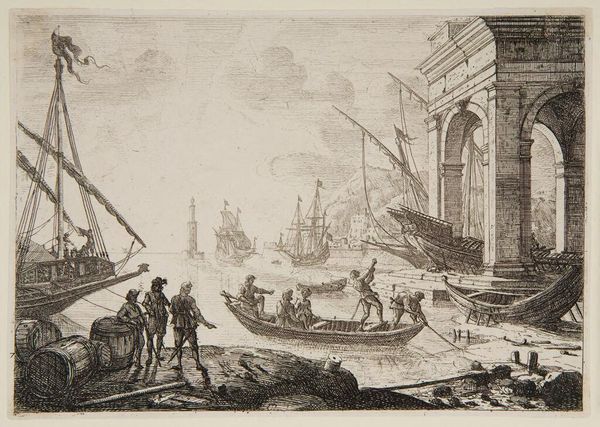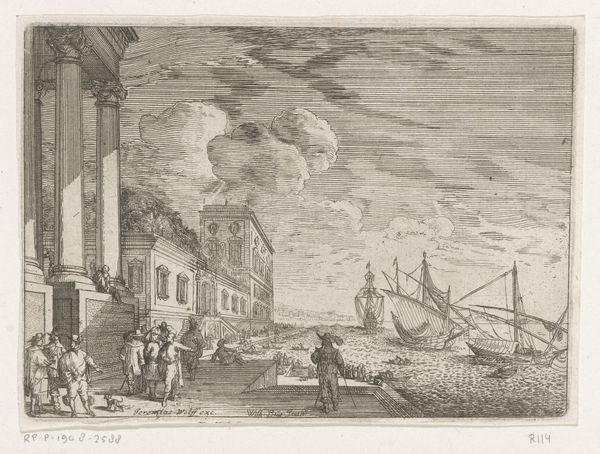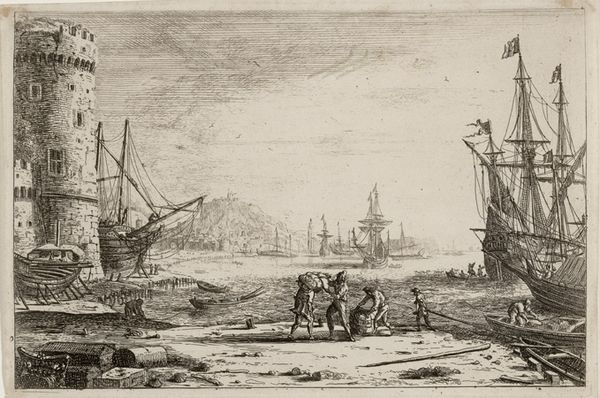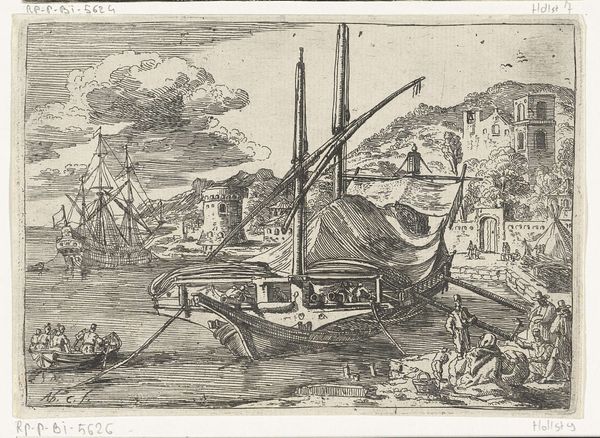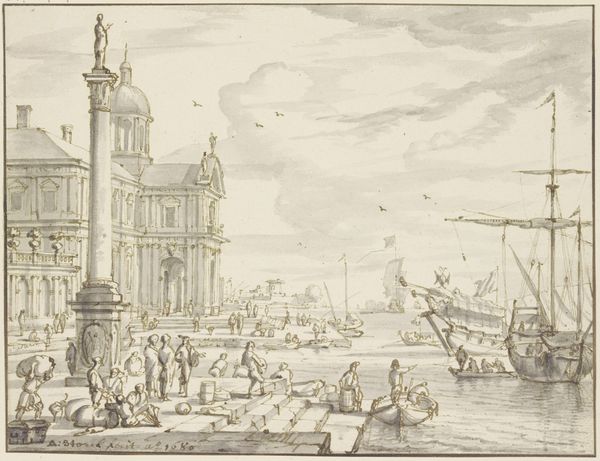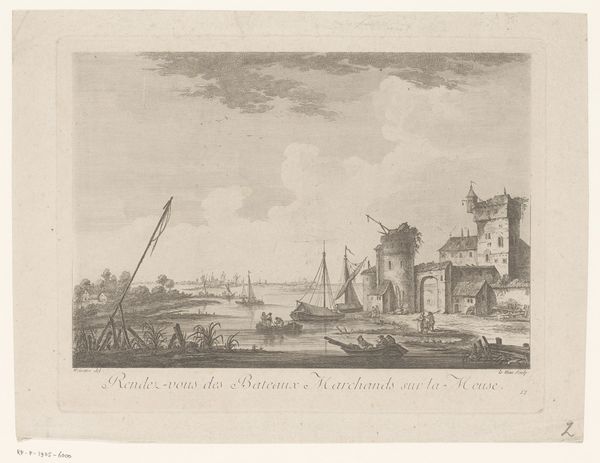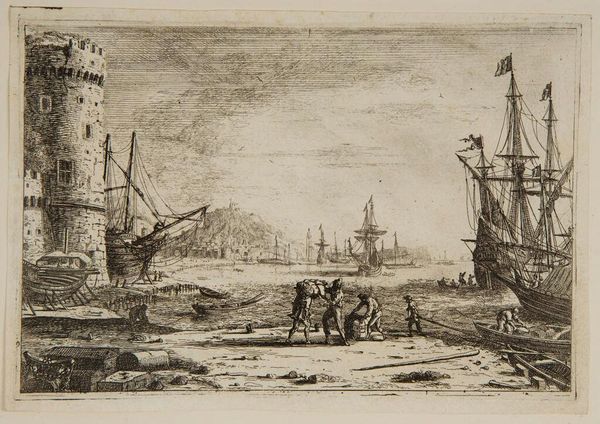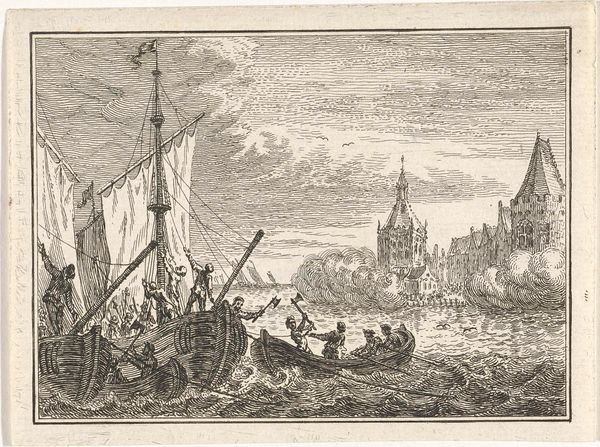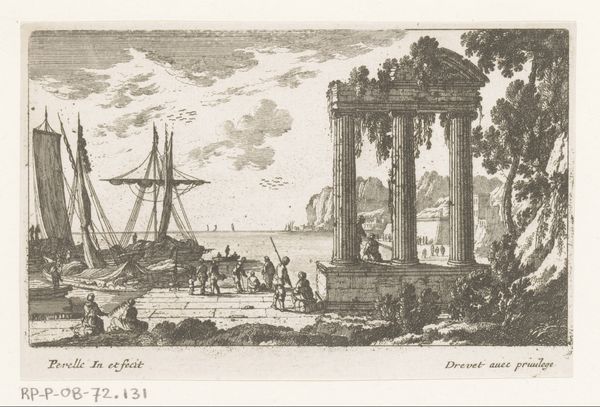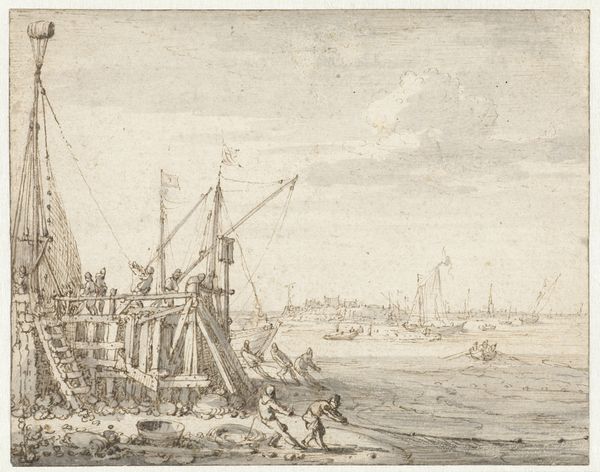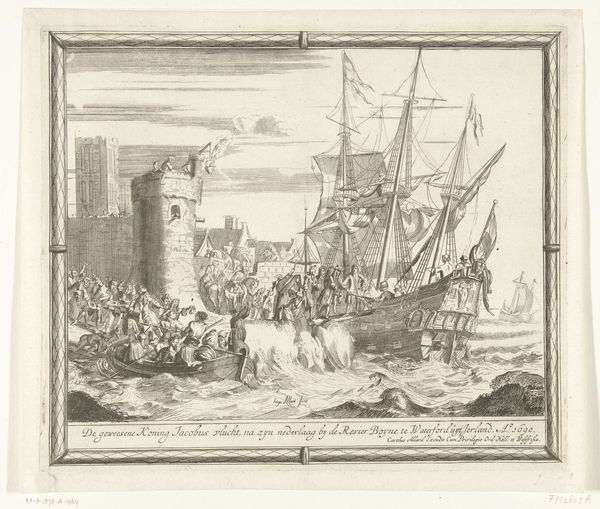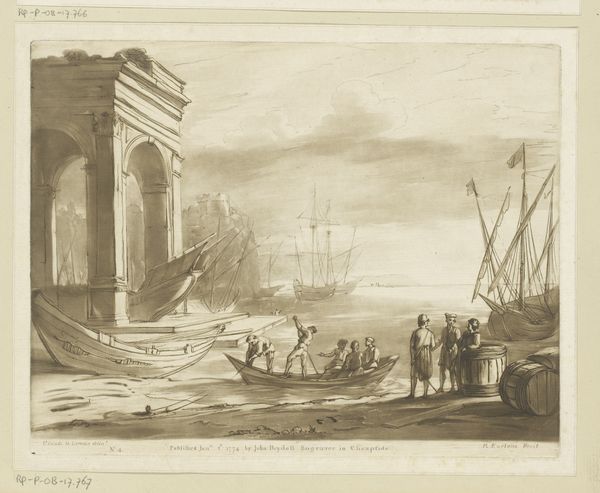
drawing, print, etching, paper
#
drawing
#
baroque
# print
#
etching
#
landscape
#
paper
#
cityscape
#
history-painting
Dimensions: 145 × 204 mm (sheet, cut within platemark)
Copyright: Public Domain
Editor: This is Claude Lorrain’s "Harbor Scene with a Lighthouse," an etching from between 1638 and 1641. It’s really striking how the light and shadows create this almost theatrical atmosphere. What do you see in this piece? Curator: For me, it’s a powerful statement about the economic and political dynamics of the 17th century. Harbor scenes weren't just pretty pictures; they were documents of global trade and power. Lorrain’s focus on the harbor—the ships, the architectural grandeur, the people engaged in commerce – all point to the rise of maritime empires and the accompanying social hierarchies. Consider who controls these waterways, who benefits from this trade, and who is exploited? Editor: That's a perspective I hadn't considered. I was mainly focused on the aesthetic elements and the composition. The classical architecture feels both impressive and imposing. Curator: Precisely! And what does that juxtaposition of classical grandeur and bustling harbor life tell us? These architectural structures often symbolize authority, control. How does this framing affect the depiction of the common people working at the harbor? Are they subjects of this 'civilized' space? Consider the lack of clear depiction for working-class people on this harbor. Editor: So, you're suggesting that Lorrain, even unintentionally, might be revealing power dynamics through his artistic choices? Curator: Absolutely. Art doesn’t exist in a vacuum. Artists are influenced by, and contribute to, the ideologies of their time. Even a seemingly benign landscape can subtly reinforce social norms. This etching provides a view of labor but tells no individual's story; this omission tells another one on its own. Editor: That’s given me so much to think about regarding how art reflects and reinforces societal structures. Thank you for broadening my view on it. Curator: My pleasure! Seeing art through an intersectional lens—examining it in relation to identity, power, and social justice—allows us to have a deeper understanding and opens space for critical dialogues.
Comments
No comments
Be the first to comment and join the conversation on the ultimate creative platform.
